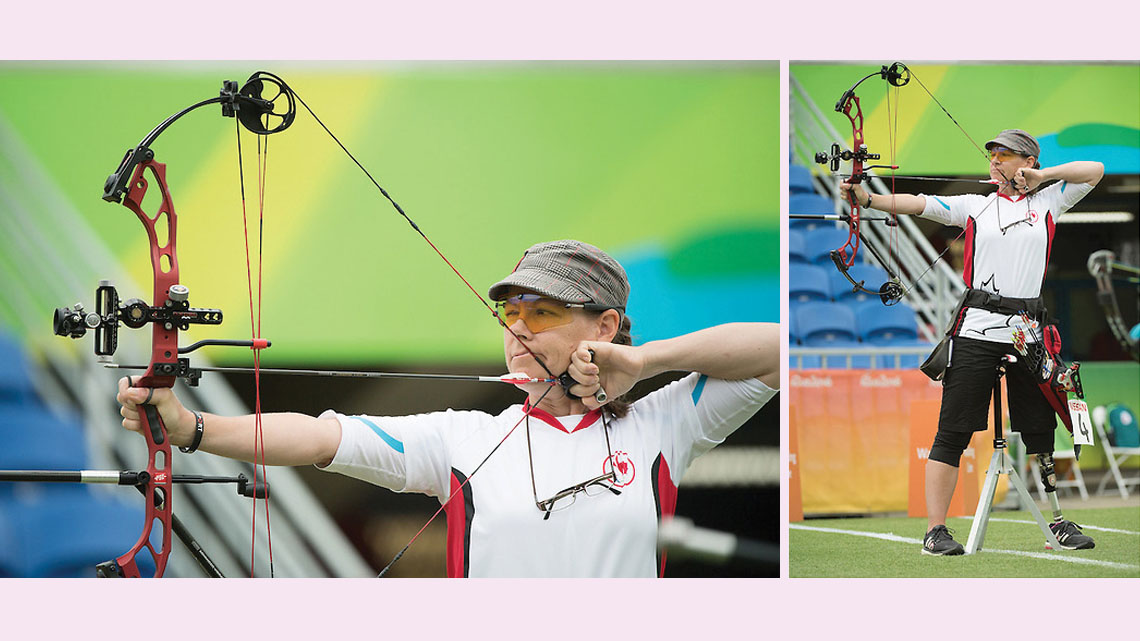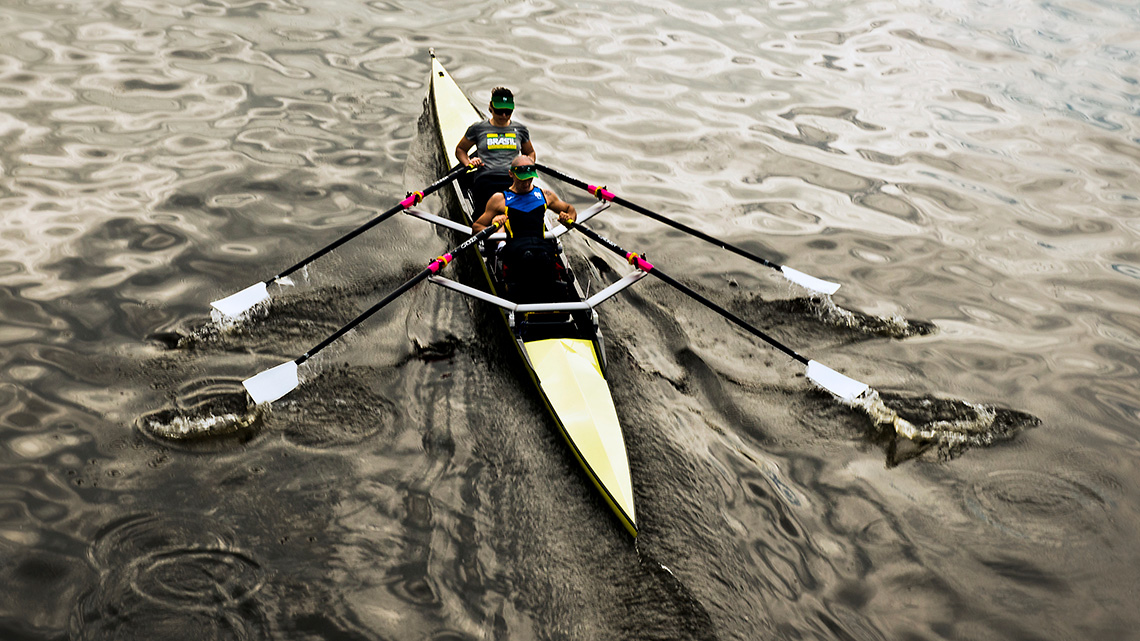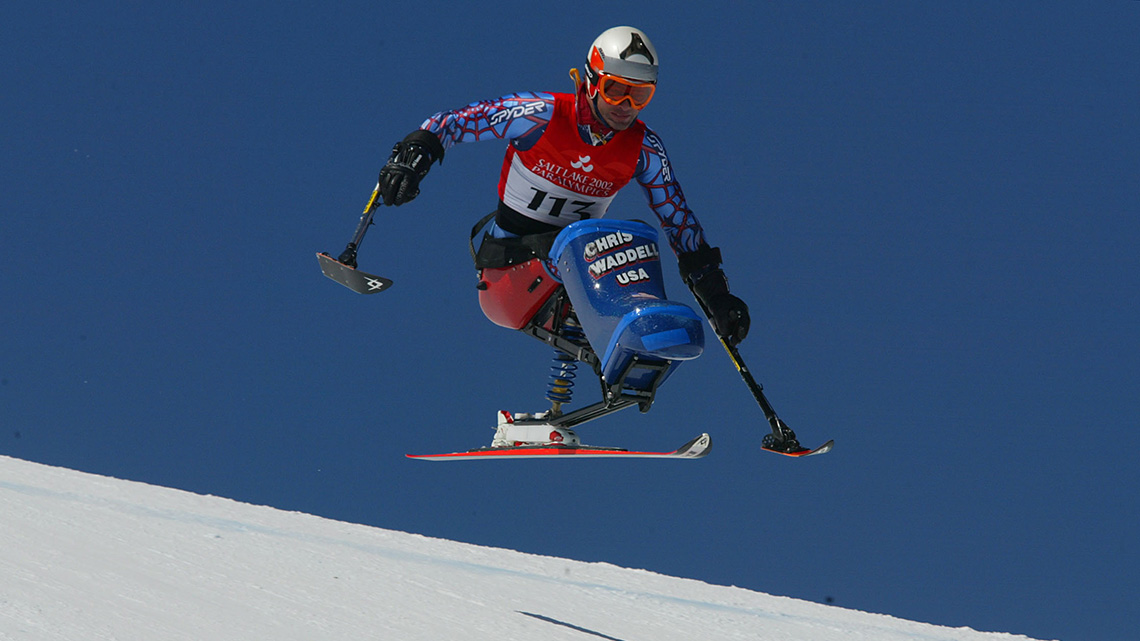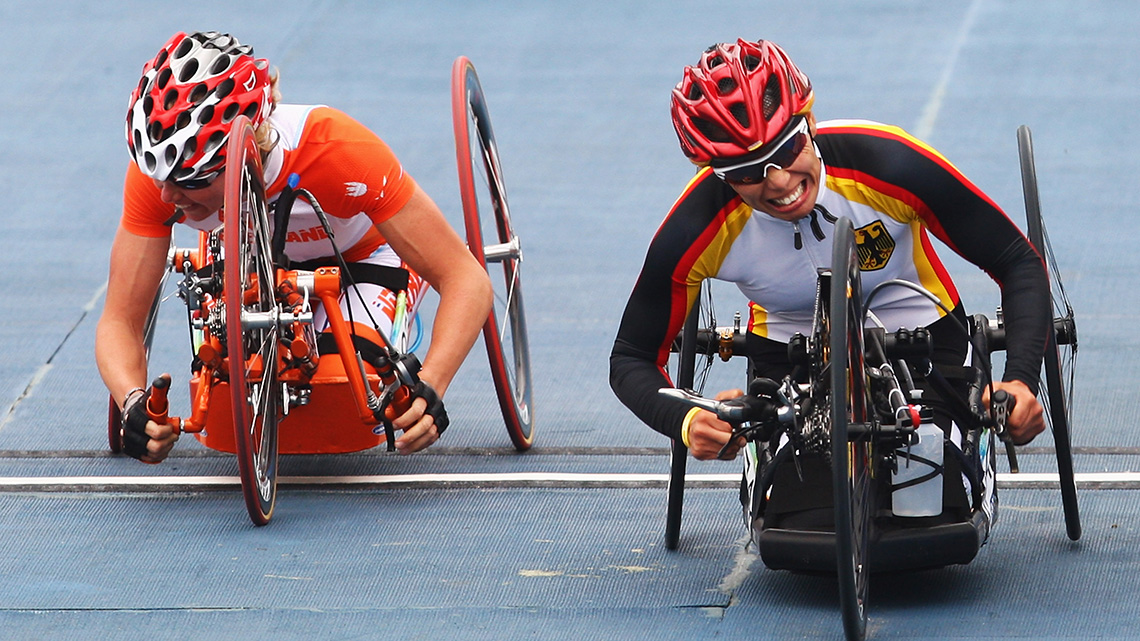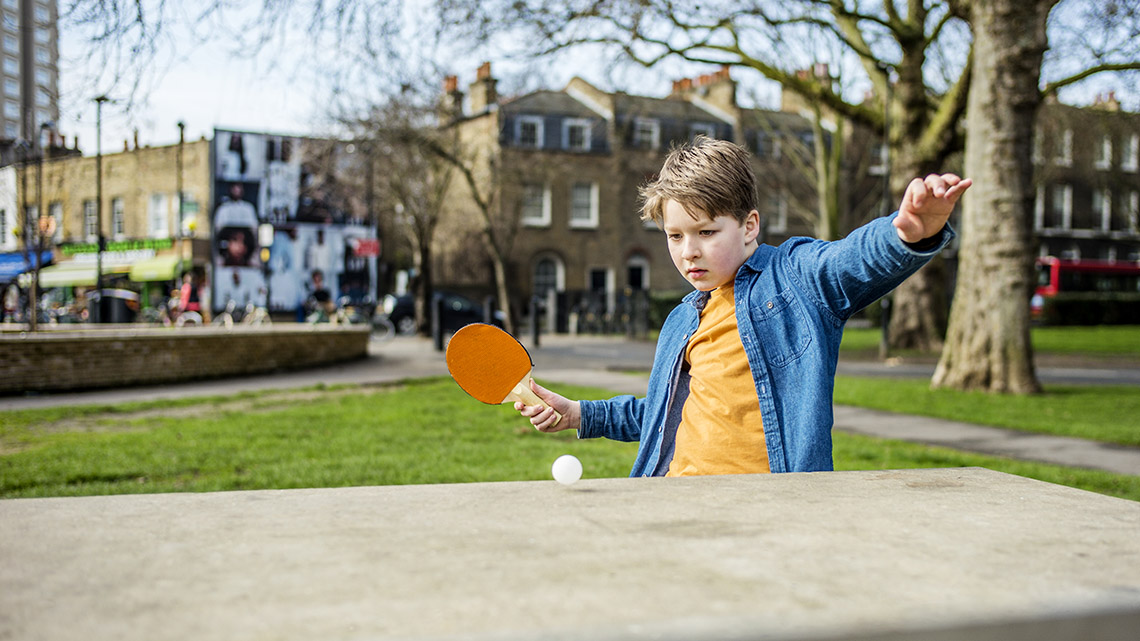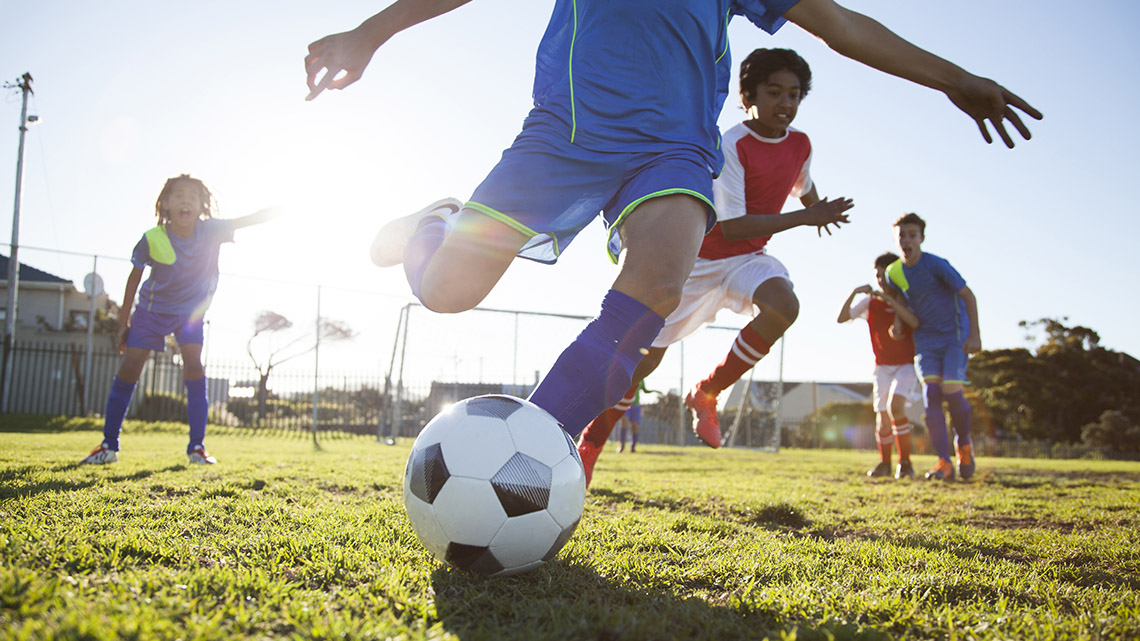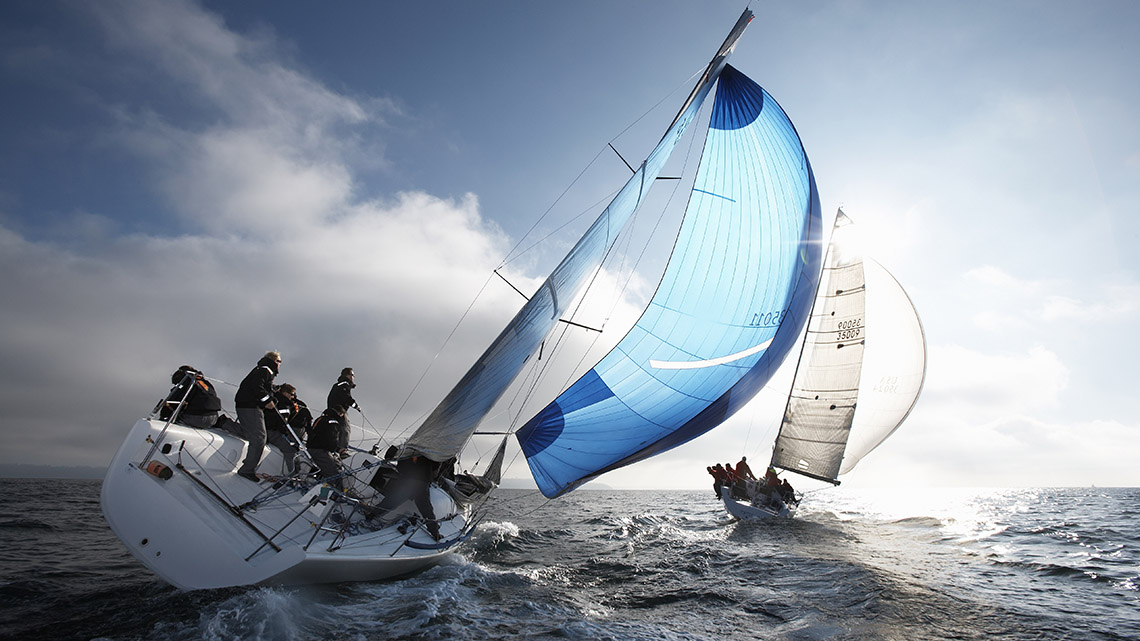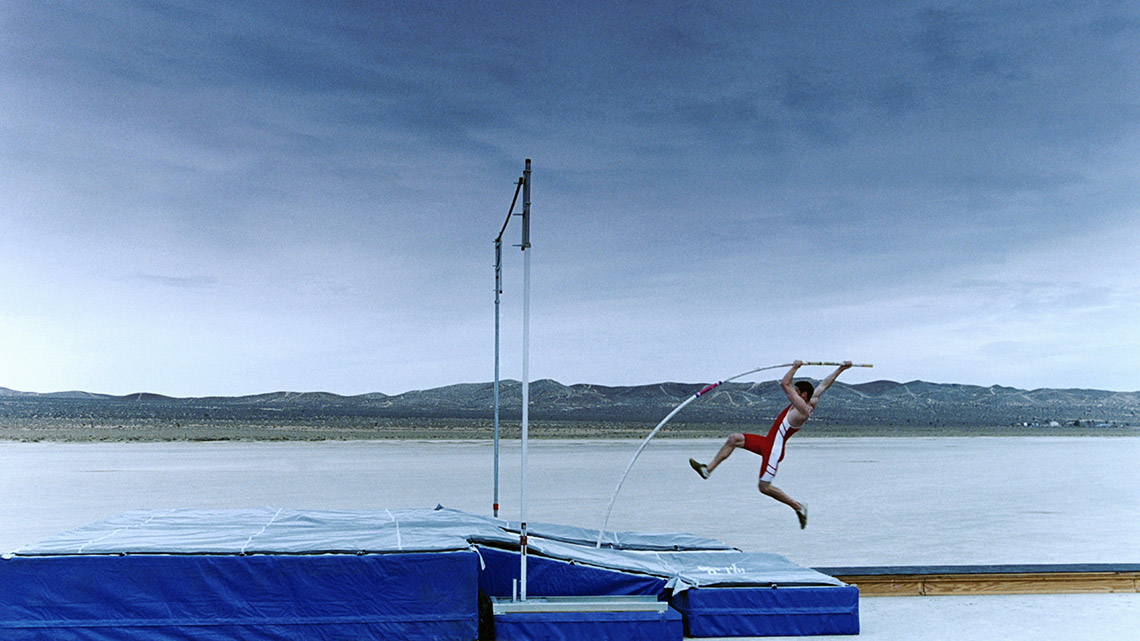Minds On
Let’s get started!
Examine the following animation.

Here are six types of simple machines. Wedge: A person is using an axe to cut a log into two pieces. An arrow shows the downward direction of the axe. Two arrows, one to the right and one to the left, show the direction the chopped pieces of wood fall. Lever: A person is using a long piece of wood placed between two rocks to move the top one off the bottom one. The person is pushing down on the lever to push the rock up. Pulley: A learner is using a pulley to lift a weight. An arrow pointing down shows that the learner is pulling down on the rope. An arrow pointing up shows that the object is being lifted. Inclined Plane: A learner is pushing an object on a dolly up a ramp, which is an inclined plane. An arrow pointing up diagonally shows the direction of movement. Wheel and Axle: A learner is pushing a pedalling a bicycle. The arrow shows the circular movement in a clockwise direction. Screw: A learner is applying downward force while moving the handle of a device in a circular motion to screw the threads into the ground.
Simple machines are all around!
But did you know? Simple machines are also important to the sports that people play and enjoy.
Check out the following video entitled “Kids Reporter Alex: Sledge Hockey” to learn more about how to play sledge hockey.
Then, consider the questions that follow.
Consider the following questions:
- What equipment does Alex use to play sledge hockey?
- How do the sticks help Alex move?
- What do you notice about what Alex wears to play sledge hockey?
If possible, share your ideas with a partner.
Action
Sledge hockey
Let’s return to the video in the Minds On.
Alex shared about his favourite winter sport–sledge hockey!
Let’s discuss how Alex moves across the ice.
- Is playing sledge hockey work?
- So how does Alex move?
To move, Alex pushes backwards with his sticks to move forward on the ice. Check out the following video and notice how the sled moves when the player pushed on their sticks.
The sticks are used as a tool or machine to help Alex do work.
In fact, the sticks work as a simple machine called a lever!
Can you guess what is different about the sticks used in sledge hockey?
Press ‘Answer’ to explore the answer!
Sledge hockey sticks are specifically made for the spot. The teeth at the end of the hockey sticks helps players grip the ice to get a strong push with enough force.

Did You Know?
Where was sledge hockey invented?
Did you know that sledge hockey began in Sweden?
It was invented by some athletes who wanted to make hockey more accessible to people with all different physical abilities.
The ice sledge was created from two skate blades that they connected to a metal sled. This allowed the hockey puck to pass underneath it.
Explore the following video to learn more about the history of the sport.
People use different simple machines in their daily lives. Simple machines help people in different ways.
There are six different simple machines, and they are all around.
Press the following tabs to learn all about the six different simple machines.
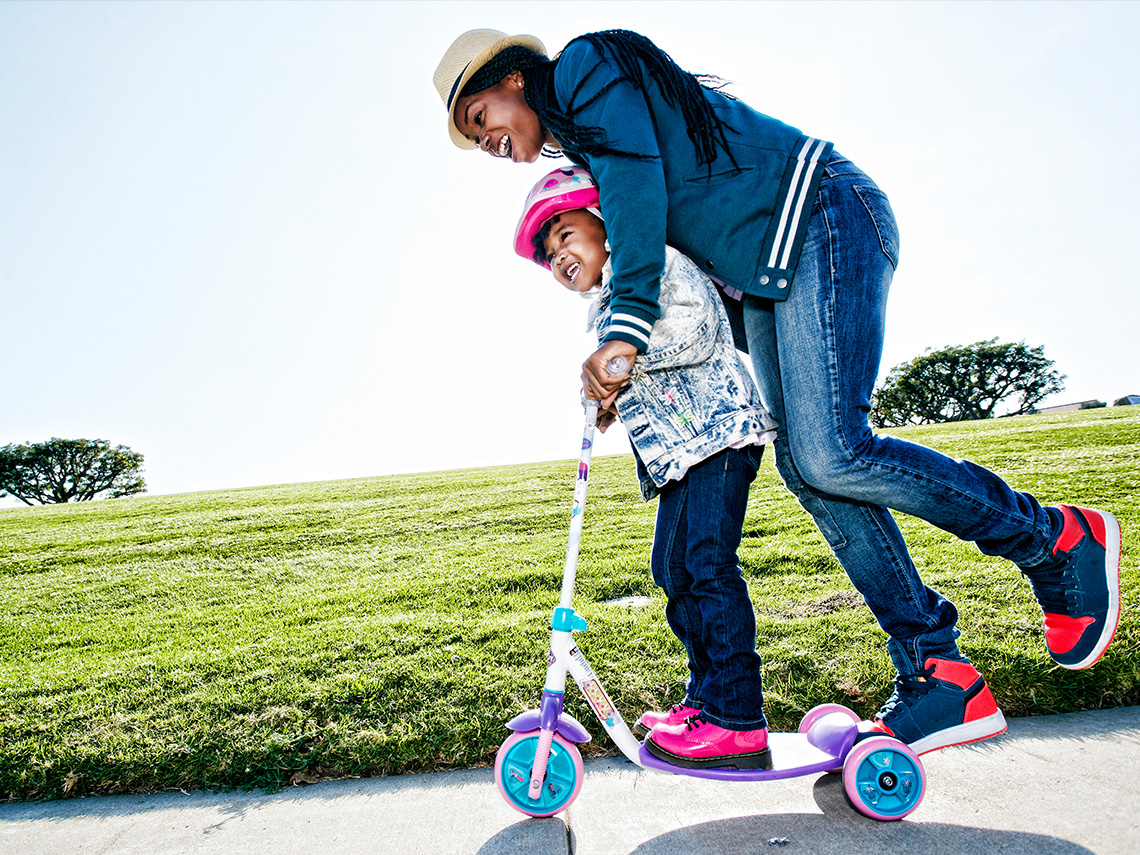
This scooter is a simple machine. It has wheels and axles. A wheel is what makes the scooter go round and round. An axle is a small rod or stick that goes through the wheel and helps move the wheel around. It can be long or short.
Explore the following animation. Do you notice the wheel? Do you notice the axle?
They are working together!
 Description
Description
A learner is pushing one of two wheels that are attached to each end of an axle. An arrow shows she is pushing forward. The wheels move easily.
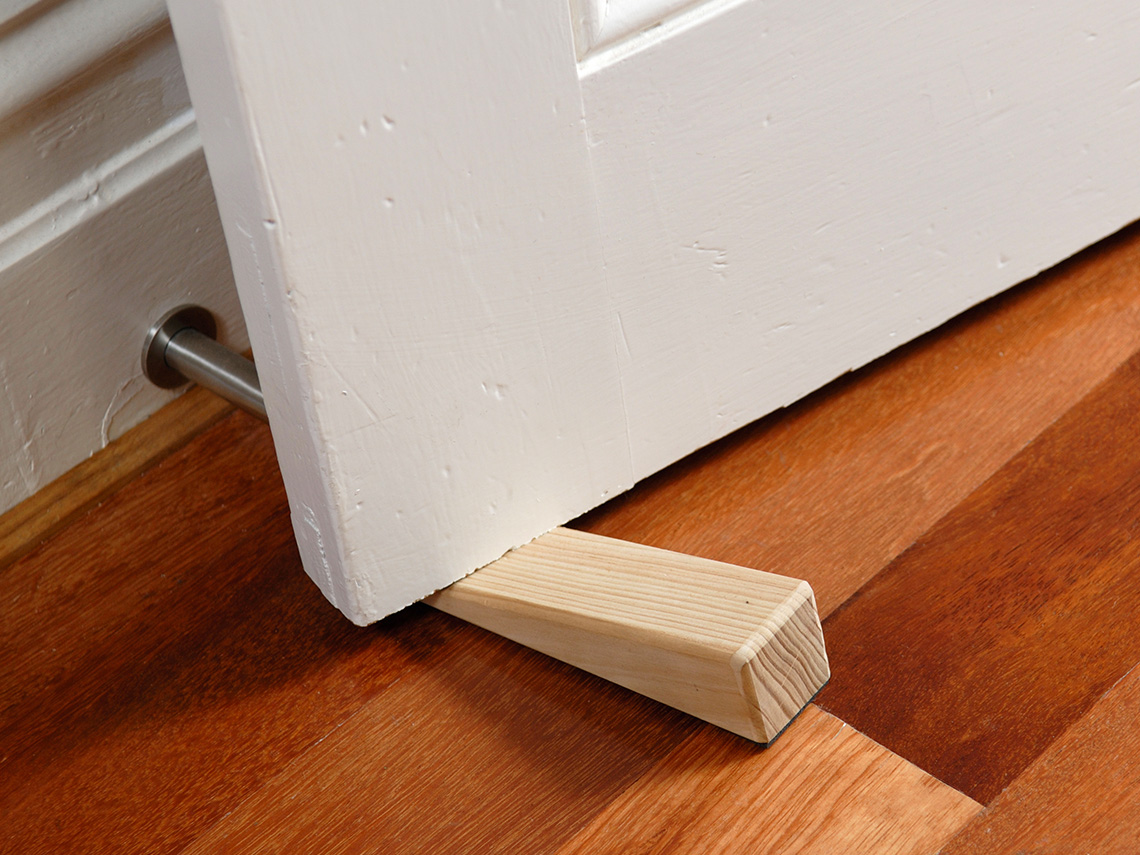
The doorstop is a simple machine. It is a wedge! A wedge has at least one side that is slanted. A wedge can hold something in its place or pull something apart.
Explore the animation. Do you notice a slanted side? Is the wedge pulling something apart or holding something in its place?
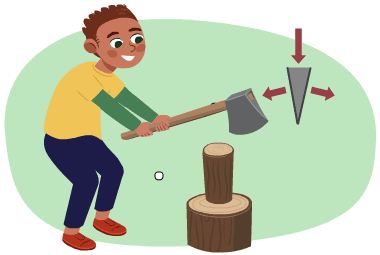 Description
Description
A person is using an axe to cut a log into two pieces. An arrow shows the downward direction of the axe. Two arrows, one to the right and one to the left, show the direction the chopped pieces of wood fall.
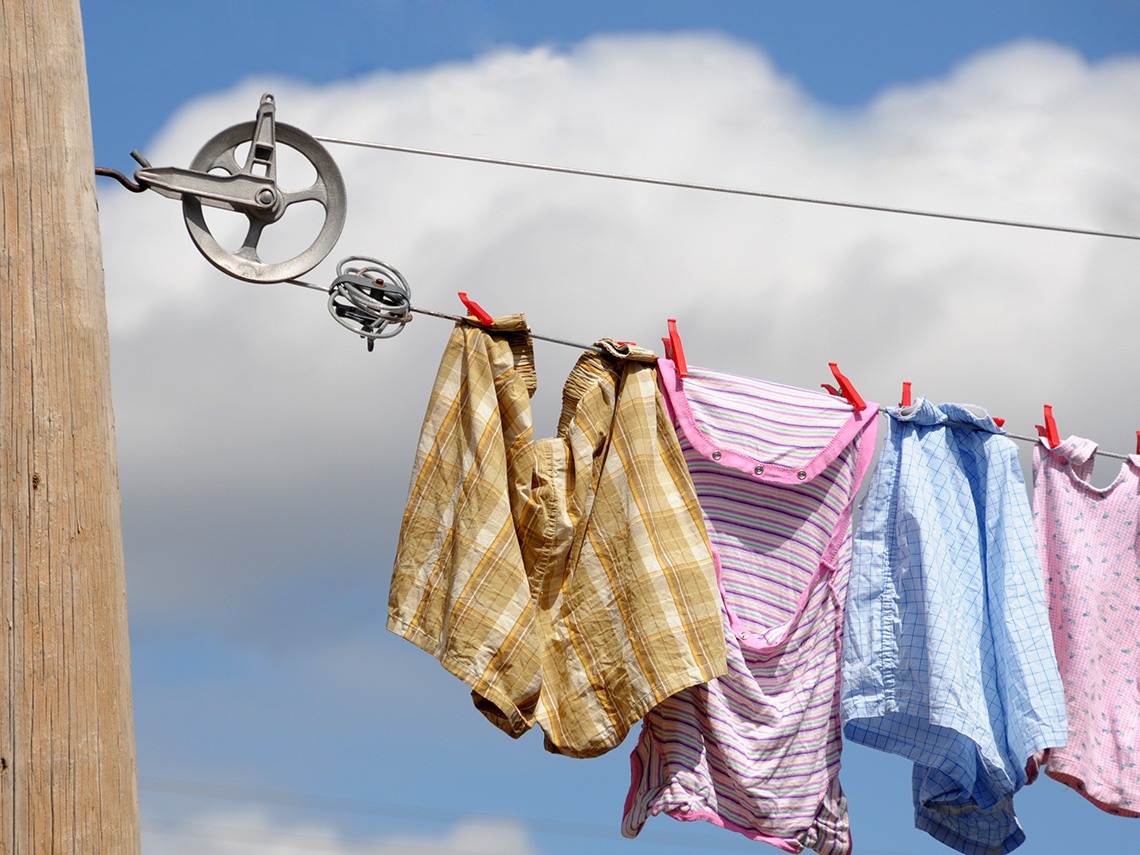
A clothesline is a simple machine. It is a pulley! A pulley uses a wheel and a rope to move and object. It can also pull an object up or pull it down.
Explore the animation. Do you notice the rope? Do you notice the wheel?
They are working together!

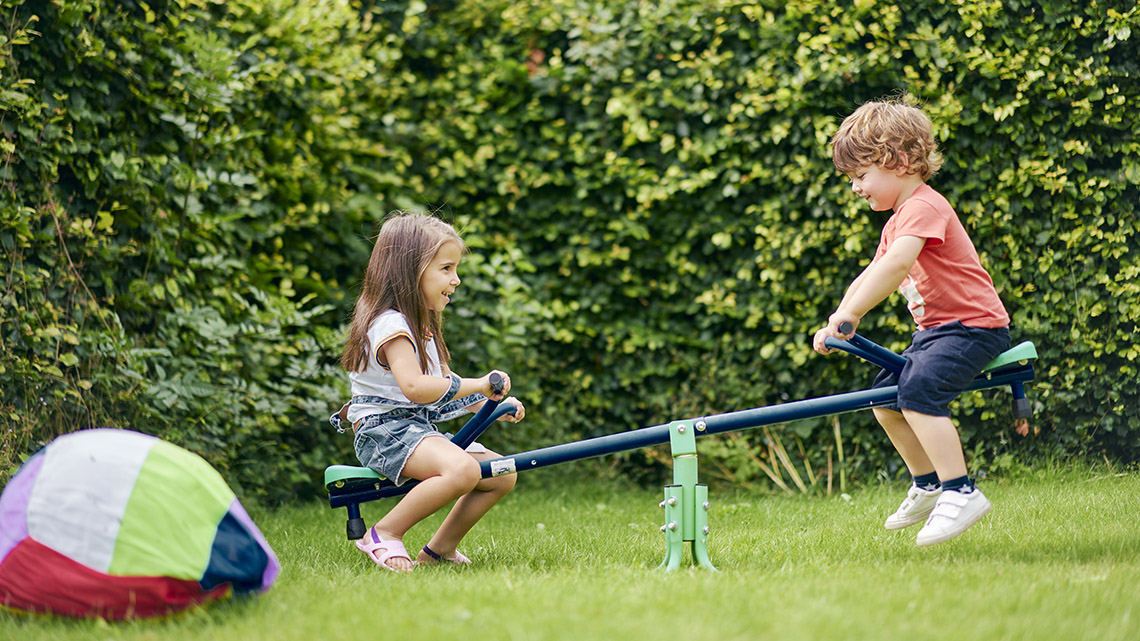
A teeter totter is a simple machine. It is a lever! A lever is a bar that has a piece in the middle of it. It’s called a fulcrum. It makes the bar move up and down.
Explore the animation. Do you notice the bar? Do you notice the fulcrum?
They are working together!
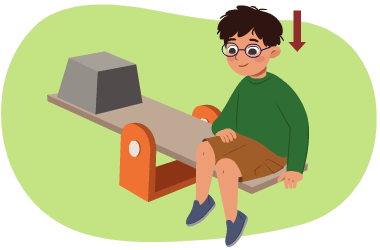

A slide is a simple machine. It is called an inclined plane! An inclined plane is a thing that is slanted which means it is not flat. There is a lower point and a higher point. This makes it easier to move something. A slide that was flat just wouldn’t work!
Explore the animation. Do you notice the inclined plane? Does it have a lower point? And a higher point?
This makes it easier to move something.
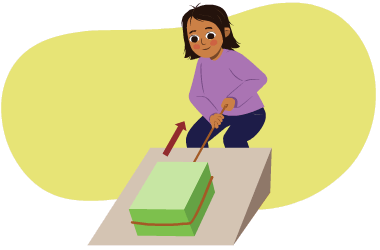 Description
Description
A learner is pulling a weight wrapped with a rope up an inclined plane towards herself. An arrow pointing up shows the direction of movement.

The water bottle cap is a simple machine. It is a screw! A screw holds things together. It has ridges around it called threads. The water bottle also has ridges around it and when you put the cap on, they match up. You can make a screw tighter by turning it one way and looser by turning it the other way.
Explore the animation. Do you notice the screw? How is it being turned?
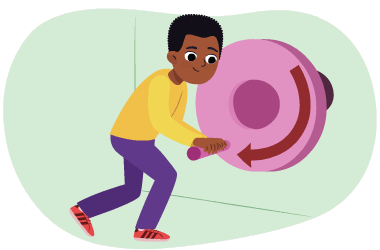
Paralympics games
Simple machines in sports
Sledge hockey, also known as para ice hockey, is the Paralympic sport version of ice hockey.
The Paralympic Games are an international sport event that involves athletes with different physical disabilities.
They take place every four years in the same year as the Olympic Games and have become one of the world’s biggest sport events.
Let’s explore different Paralympic sports that use simple machines.
Explore the following carousel. Can you identify the simple machine?
Press ‘Hint’ to access a guiding idea to help you identify the simple machine!
The simple machines might help move an object and/or the athlete(s).
In the following Matching activity, choose the simple machine that best fits the sport!

Teacher A and Teacher B are talking about simple machines. Teacher A: What kind of simple machine is an arrow? Teacher B: Some might consider the arrow in archery to be a wedge! Like the wedge, the tip of the arrow is wide at one end and thin at the other end. Teacher A: How does the wedge shape help an arrow? Teacher B: This shape helps the arrow wedge itself into the archery target, which stops it from moving.
Explore the following images of a wedge and an arrow. What do you notice about their shapes?

Next, let’s explore how the simple machines do work.
Press the following tabs to check out the following simple machines in sports!
The compound bow uses two different pulleys.
As the archer pulls back on the bowstring, the pulleys turn and make it easier for the archer move hold the bowstring and arrow back.
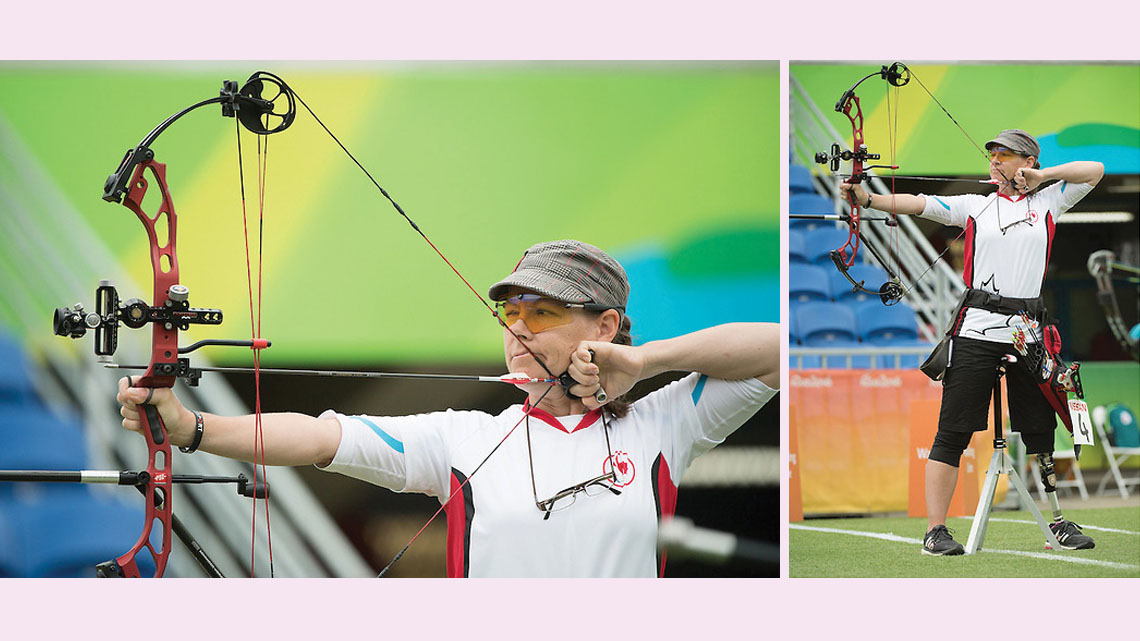
Para-archery
Paralympian Karen Van Nest competes at the Rio 2016 Paralympics Para-archery women's individual competition. © Canadian Paralympic Committee
When it’s easier to pull the bowstring back, it makes it easier for the archer to take their time and aim at their target.
The pulleys also make it easier for the archer to add speed to their arrow with less effort.

Pulleys and compound bows
Rowing uses the simple machine known as a lever.
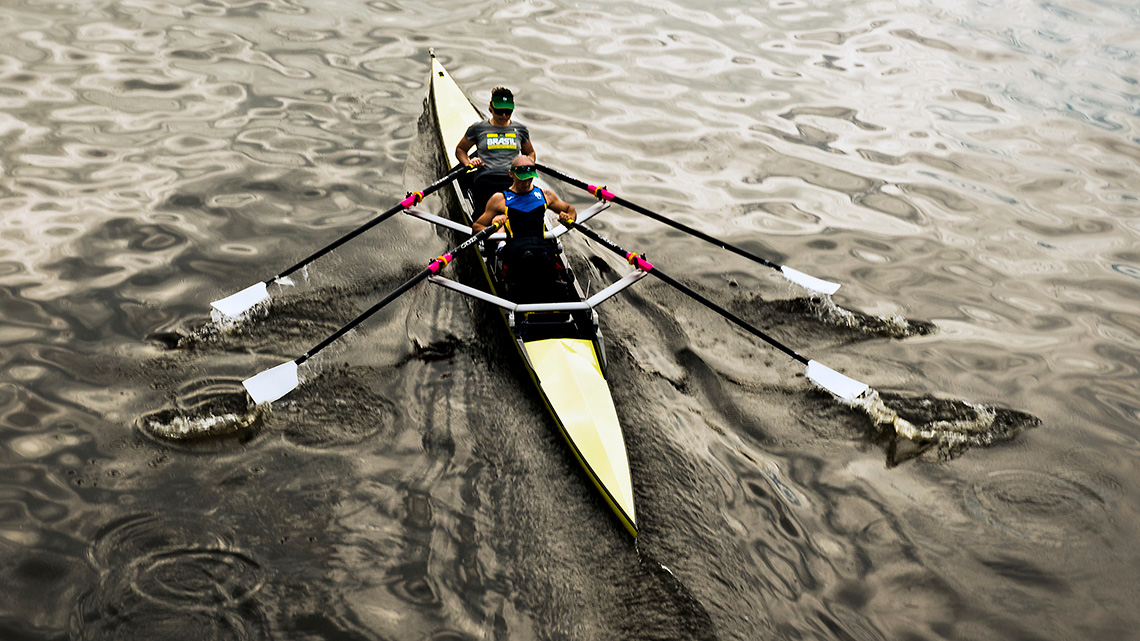
Para-rowing
In rowing, the oars are levers.
The oarlock is where the lever rests (also known as the fulcrum).
Pulling back on one end of the oar pushes the water backwards and moves the boat forward!

Rowing
Your turn
Consider the simple machines used in alpine skiing and hand cycling.
Respond to the following questions:
- How does the inclined plane work in alpine skiing? How does it help the skier move?
- How does the wheel and axle work in hand cycling? How does it help the cyclist move?
Record your ideas in the follow fillable and printable How it Works document or use another method of your choice.
|
Sport |
Simple machine |
How it works |
|---|---|---|
|
archery 
|
pulley 
|
the pulleys on a compound bow make it easier to pull the bowstring back |
|
rowing 
|
lever 
|
the levers in rowing (the oars) help the rowers move the boat and fast |
|
cycling 
|
wheel and axle 
|
|
|
alpine skiing 
|
inclined plane 
|
Press the ‘Activity’ button to access How It Works.
Now that you have filled out your How It Works document, explore the following Answer Key!
Press ‘Answer Key’ to check out the answers.
|
Sport |
Simple machine |
How it works |
|---|---|---|
|
archery 
|
pulley 
|
the pulleys on a compound bow make it easier to pull the bowstring back |
|
rowing 
|
lever 
|
the levers in rowing (the oars) help the rowers move the boat and fast |
|
cycling 
|
wheel and axle 
|
the wheel and axle on the handcycle help the athlete to move a further distance, and faster, with less effort |
|
alpine skiing 
|
inclined plane 
|
the inclined plane connects the top and bottom of a hill or mountain. It allows the skier to slide down the hill |
Press the ‘Activity’ button to access How It Works.
Consolidation
Putting it all together
Let’s review our learning about simple machines that are used in sports! Choose one of the following two options for your exploration:
- Option 1: Pick a sport that uses a simple machine.
- Option 2: You may also choose to label and describe the following sport.
Option 1: Pick a sport that uses a simple machine
If you pick Option 1, select any sport that was not explored in this Learning Activity. Some examples include:
Once you have chosen your option, describe the simple machine.
- How does the simple machine work?
- How might it help someone move?
Record your ideas digitally, orally, or on paper.
Press ‘Hint’ to remind yourself of the six possible simple machines.
There are six simple machines:
- lever
- pulley
- inclined plane
- wheel and axle
- wedge
- screw
Option 2: Skateboarding
Examine the following image of person skateboarding.
Then, respond to the following questions.
- What simple machines do you notice?
- How do they work?
- How do they help the person move?
Record your ideas digitally, orally, or on paper.
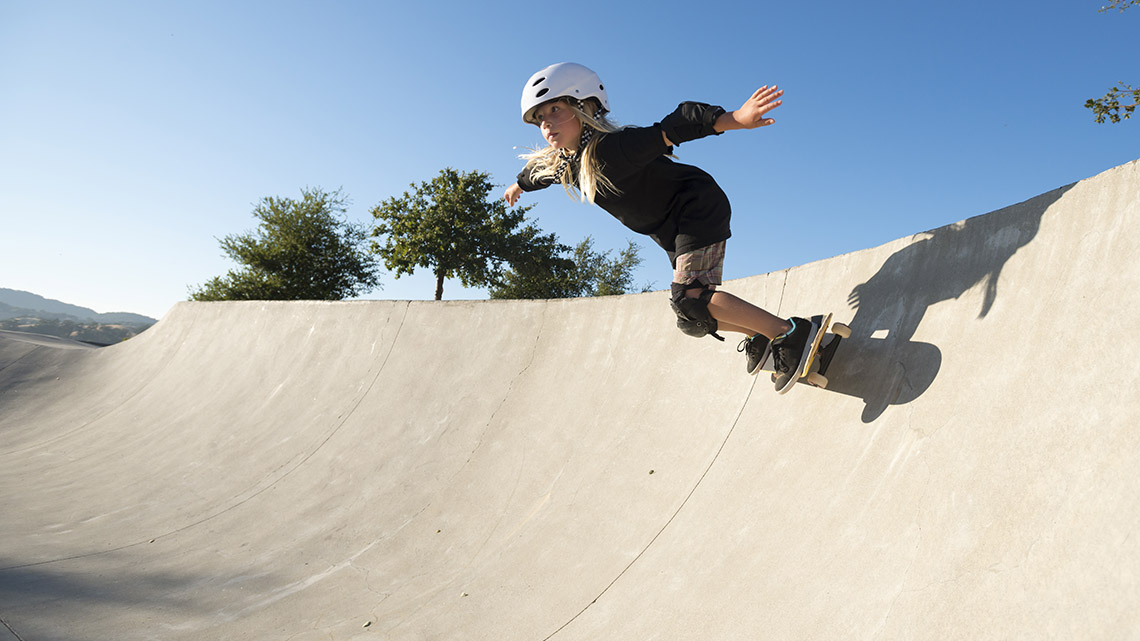
Reflection
How do you feel about what you have learned in this activity? Which of the next four sentences best matches how you are feeling about your learning? Press the button that is beside this sentence.
I feel…
Now, record your ideas about your feelings using a voice recorder, speech-to-text, or writing tool.
